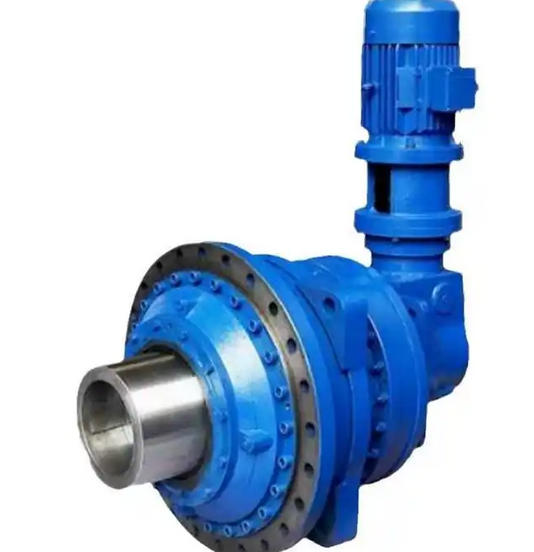What are the vulnerable parts of P2SA26 planetary gearbox
There is no publicly available list of vulnerable parts for P2SA26 planetary gearboxes, but the core transmission structure and force logic of planetary gearboxes are universal. Based on the common fault patterns of this type of equipment, their vulnerable parts can be divided into three categories: core transmission components, sealing and protective components, and auxiliary fastening components, as follows:
1. Core transmission components
These types of components are the core of power transmission, which can withstand high-frequency meshing impact, heavy load pressure, and high-speed operation losses for a long time. If damaged, it will directly affect transmission accuracy and power output.
Planetary gears and internal ring gears: As core meshing components, the tooth surface continuously experiences huge frictional and impact forces during operation, which can easily lead to problems such as tooth surface wear, pitting, chipping, and even tooth breakage. Especially under heavy load or insufficient lubrication conditions, it will accelerate losses, leading to a decrease in the output torque of the gearbox and an increase in operating noise.
Bearings: Bearings are used to support the operation of shaft systems, withstand radial and axial loads, and are exposed to high-speed and high-temperature environments for a long time. Common forms of damage include ball wear, scratches on the raceway, deformation of the cage, etc. After damage, the vibration of the gearbox will intensify, the temperature at the bearing end will abnormally rise, and in severe cases, the shaft system will be stuck, causing shutdown faults.
Output/input shaft: Shaft components need to transmit torque, and their shaft heads, keyways, and other parts are the points of force concentration. After long-term use, it is prone to wear and deformation, and may even fracture if subjected to overload or instantaneous impact. Shaft damage can cause loose coupling connections, unstable power transmission, and even abnormal clearance between the shaft and gears.

2. Sealed protective components
These types of components are responsible for protecting the internal structure and are mostly made of materials that are prone to aging, such as rubber. If damaged, they can cause chain failures and require special attention.
Oil seal: The oil seal is installed at the shaft extension end and end cover to prevent lubricating oil leakage and external dust and water vapor from entering. Its material is mostly rubber, which is prone to aging, deformation, and cracking due to long-term exposure to high temperatures. Once damaged, it can cause lubricating oil leakage, and the invasion of impurities can exacerbate the wear of internal gears and bearings.
Sealing ring: distributed on the joint surface of the shell, maintenance port and other parts, used to seal gaps. Long term exposure to vibration and temperature changes can lead to decreased elasticity and damage, resulting in oil leakage at the joint surface, affecting equipment cleanliness and internal lubrication environment.
3. Auxiliary fastening components
Although these small components do not directly participate in power transmission, they are crucial for the stable operation of the equipment and are prone to damage due to factors such as vibration.
Tightening screws and connecting bolts: The tightening screws of the input clamping ring, the connecting bolts between the motor and the reducer, etc., are prone to loosening, slipping, and even breakage due to long-term equipment vibration. If not dealt with in a timely manner, it can lead to an increase in the gap between component connections, exacerbate vibration and noise, and in severe cases, cause component detachment, leading to serious malfunctions.
Keypin: Keypin is used to fix gears and shafts, and bears shear force when transmitting torque. When used for a long time or overloaded, it is prone to shear fracture or wear, causing the gears and shafts to slide relative to each other and unable to transmit power normally, resulting in abnormal output speed of the reducer.

